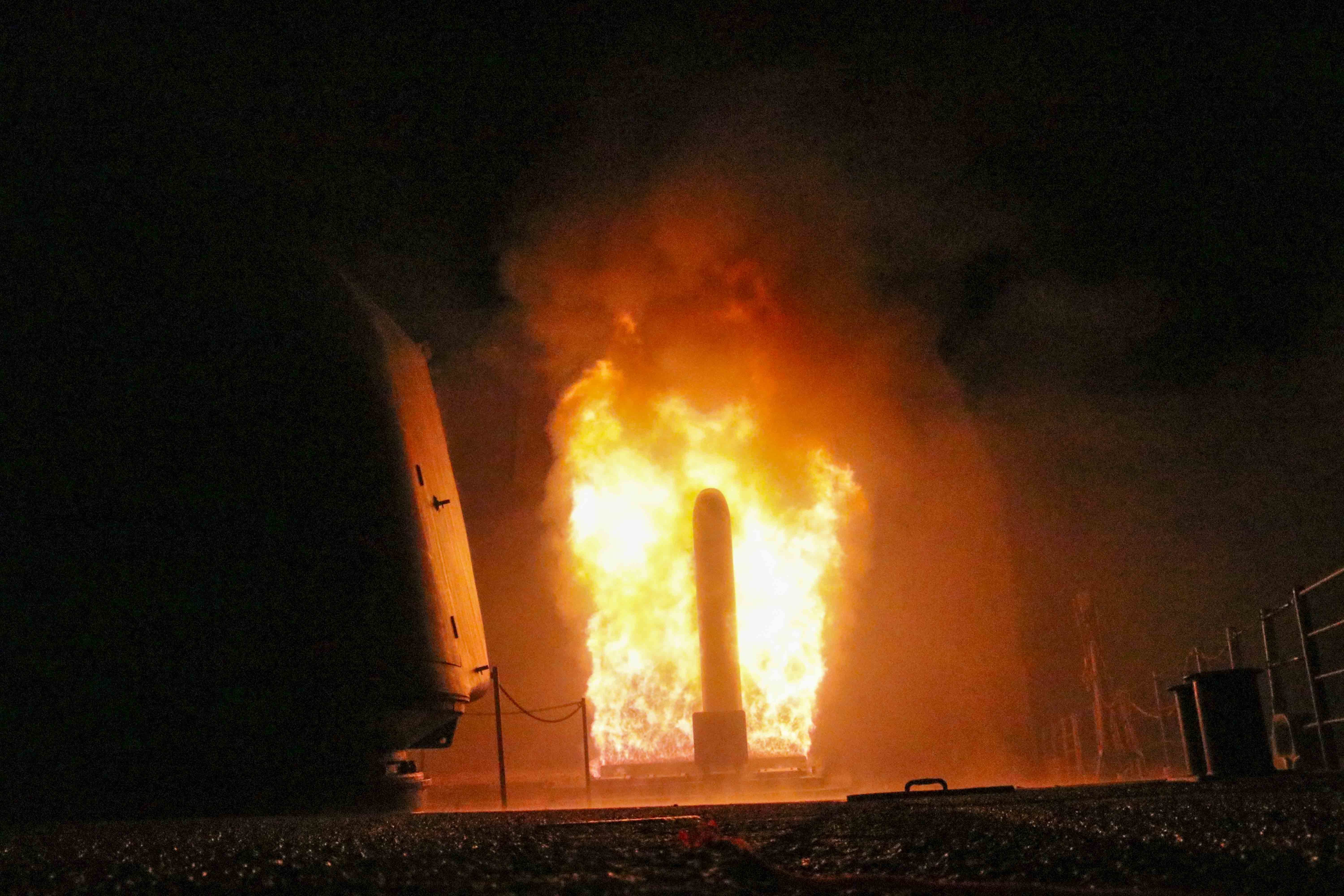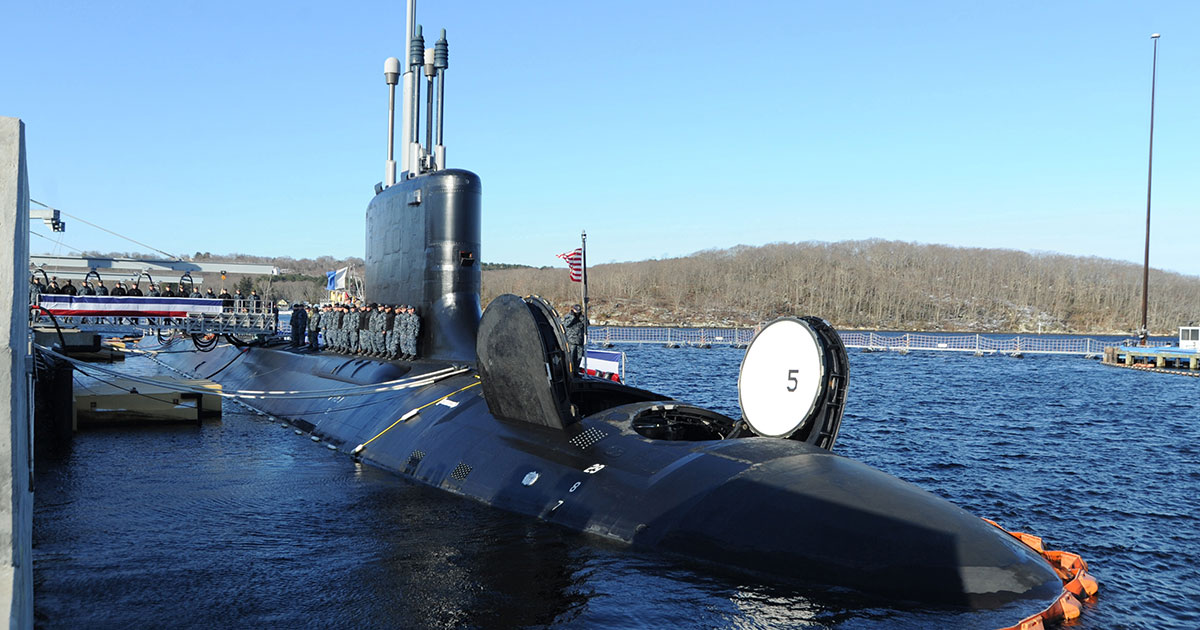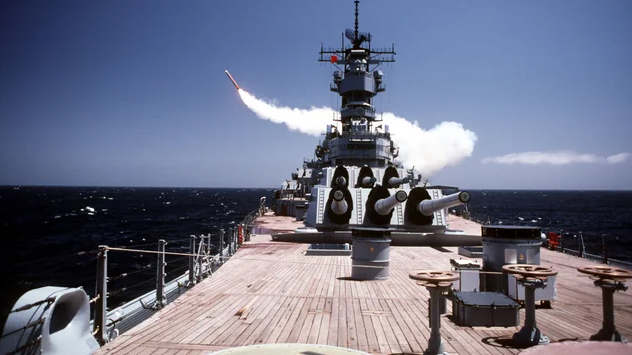As President-elect Donald Trump nears his return to the White House, the U.S. Navy’s nuclear-armed sea-launched cruise missile (SLCM-N) program started during his first term is potentially returning to the spotlight as well.
It remains unclear whether Trump’s second term will put wind in the sails for the program, which President Joe Biden proposed canceling in the 2022 Nuclear Posture Review. Questions remain about whether the deterrent juice is worth the financial and resource squeeze to field SLCM-N and its warhead in the next decade, and the potential role it could play in escalating hostilities, not lessening them. Concerns also persist about whether it will irrevocably change the very nature of the American attack submarine force, and if all those dollars could be better spent elsewhere.
While the Navy has proceeded with standing up the program as required by Congress, sea service leaders have increasingly expressed concern about whether it’s a wise allocation of finite resources. And despite Biden White House and Navy hesitancy, Congress has continued to fund the program.
But supporters argue that SLCM-N would provide a much-needed sea-based nuclear deterrent that is a rung below the strategic level on the nuclear warfare ladder, and that the commander-in-chief is owed a bevy of such options.
Like its predecessor, the U.S. Navy’s scuppered nuclear-armed Tomahawk Land Attack Missile-Nuclear (TLAM-N), SLCM-N is envisioned as a lower-yield nuclear weapon launched from subs that would provide a new dimension to the maritime portion of the nuclear triad while allowing the United States to proportionately respond to a limited nuclear strike by an adversary.

“It’s part of an overall ability to build a flexible reaction, flexible deterrent,” Bradley Martin, a retired Navy surface warfare officer and current senior policy researcher at the RAND think tank, told The War Zone. “Being sea-based, it does allow concealment and less vulnerability than there might be if it’s sitting on an attack aircraft someplace.”
Meanwhile, a Navy request for information published on November 15 offers some of the most specific information released to date about how the Navy envisions outfitting SLCM-N in the Virginia class attack submarine fleet.
The RFI is part of Navy “market research” focused “on rapid development, integration, and demonstration” of an SLCM-N “all-up round,” or a missile delivered ready to load onto an attack submarine.
It seeks white papers featuring industry perspectives “on either weapon system integration, cruise missile prototype development, or cruise missile subsystems.”
The request further notes that all nuclear warhead installation and missile storage, as well as missile onloading and offloading, will take place at existing ballistic missile submarine facilities at Kings Bay, Georgia, and Bangor, Washington.
Any prototype must be able to be launched from a 87-inch Virginia Payload Tube, a Virginia Payload Module, or both.

The Navy is also looking for missiles that are “as modular as possible,” including software and hardware, so that changes to the core missile body or common tactical systems don’t require changes to warhead payload interfaces or avionics “associated with the nuclear mission.”
“This open system approach is being pursued to allow for future technical insertion or technology upgrades as required through the life of the SLCM-N program,” the Navy’s request states.
The request also seeks the ability to break the missile into nuclear and non-nuclear parts.
“Technology proposed for the SLCM-N flight system must be producible and fieldable to meet an FY 2034 initial operational capability,” the RFI states. “However, prototypes will be required within 3 years.”
Still, much remains unclear about how this missile system will eventually manifest. The Navy has not released details regarding how many missiles it would plan to buy or the work that will be required to outfit submarines with the system. Even basing them at Trident facilities, which primarily host nuclear ballistic submarines, seems like a major hurdle to deploying them regularly.
The Congressional Budget Office estimated in July 2023 that the SLCM-N and its warhead could cost $10 billion from 2023 to 2032, and that such costs don’t include “systems integration, storage or operations.”
Count Vice Adm. Johnny Wolfe, director of the Navy Strategic Systems Programs (NSSP), as one of the SLCM-N skeptics.
Wolfe’s office oversees the seaborne leg of America’s nuclear triad. Speaking at the Navy Submarine League’s annual conference last week, Wolfe called existing plans to reach initial capability for SLCM-N by 2034 “a very, very aggressive timeline,” Sydney J. Freedberg Jr. of Breaking Defense reported.
According to that outlet, Wolfe also warned in his conference remarks that the program would basically require an entire new workforce and industrial base, at a time when the Navy and American defense giants are struggling to deliver new ships and get existing ships out of maintenance on time.
“This is truly a capability we have to build from the ground up,” Breaking Defense quoted Wolfe as saying.
Wolfe also quashed the idea of the Navy simply recreating a nuclear Tomahawk from the Cold War era.
“We can’t reconstitute that, okay?” Breaking Defense quoted Wolfe as saying. “It’s not that easy.”
A Navy spokesperson later confirmed to Breaking Defense that Wolfe was referring to producing an appropriate missile, and not the nuclear warhead, which would be the responsibility of the U.S. Energy Department.
“The requirement to deliver SLCM-N would increase the capacity requirement amongst industry to a level that had not previously been accounted for,” the spokesperson said, according to Breaking Defense.

While some brass has expressed skepticism over the program, the Biden administration also warned in July 2023 of the trade-offs in going forward with SLCM-N.
Namely, in a policy statement, the White House said that deploying the system “would reduce capacity for conventional strike munitions, create additional burdens on naval training, maintenance and operations, and could create additional risks to the Navy’s ability to operate in key regions,” according to a report this month on the program by the Congressional Research Service.
Indeed, taking SLCM-N to sea would require standing up a bevy of new Navy systems and protocols, as deploying and supporting nuclear weapons is a different reality compared to conventional munitions.
New security protocols and personnel would have to be deployed. Highly specific surveillance and maintenance requirements would have to be enacted. This is in addition to specialized and highly secure communications systems needing to be installed and sustained in order to receive nuclear strike orders through proper channels.
Such a capability would also require additional vetting and training of sailors assigned to such vessels.
“It’s perfectly valid to say there’s considerable costs that would go with putting this on a SSN,” Martin said. “There would be security protocols, command-and-control protocols that would have to be added.”
Navy Secretary Carlos Del Toro also warned in testimony to the Senate Armed Services Committee in May that the program would “fundamentally change the mission of many of these submarines themselves.”

Del Toro noted that the Navy had stood up an SLCM-N program management office as required by law, but that he remained concerned that the program would “operationally impact” Navy submarines’ ability to do their jobs in the Pacific and elsewhere.
“That actually will prevent us perhaps from doing the things that we need to do tactically and operationally, by providing this SLCM capability to the submarine.”
Del Toro also noted how this “multi-billion dollar program” will prevent the naval enterprise from taking on other pricey priorities.
The Navy said in 2022 that canceling the effort would save the service nearly $200 million in Fiscal Year 2023 alone, and $2.1 billion in the next five years, according to the CRS.
Defense Secretary Lloyd Austin has also questioned the effort, testifying that year that “the marginal capability that [the SLCM-N] provides is far outweighed by the cost,” the CRS notes.
But supporters of the program argue that the main reason for American subs in the first place is deterrence, and giving the president an additional submarine-launched tactical nuclear option has major advantages.
The U.S. Navy has already fielded a lower-yield nuclear strike option in the form of the W76-2 warhead loaded onto an unspecified number of Ohio class nuclear ballistic missile submarines (SSBNs), boats that are already set up to fire nuclear weapons.
Concerns over an adversary not knowing if a Trident launch is packing a low-yield or much more powerful payload is also an issue. The cruise missile delivery system fired by SSNs solves this issue to some degree, but also introduces others in terms of strategic ambiguity. If these boats can fire nuclear-armed cruise missiles, then will any cruise missile be interpreted as such during a crisis?
Still, proponents think fielding the weapon is worth the effort. It provides “significant flexibility to manage a crisis,” Franklin C. Miller, a former senior defense official and National Security Council staffer, wrote in Real Clear Defense this summer.
And while it doesn’t these days, the U.S. Navy’s non-ballistic missile-equipped fleet does have a history of carrying nuclear weapons, Miller writes.
“Throughout the Cold War, U.S. carriers deployed with nuclear gravity bombs and ASW weapons; surface combatants carried a range of nuclear-tipped anti-air and ASW weapons; and SSNs carried nuclear-tipped torpedoes and the SUBROC ASW systems,” he writes. “From the 1980s until the end of the Cold War, surface ships and SSNs also carried nuclear Tomahawks (and those nuclear Tomahawks contributed significantly to deterring Soviet nuclear attacks on our aircraft carriers).”

Several military leaders have also echoed the contention that the commander–in-chief should have several tailored tactical nuclear weapons options at their disposal.
Miller cites repeated testimony by Chief of Naval Operations Adm. Lisa Franchetti saying that “SLCM-N is a tailored option the President should have,” while a recent CRS report notes then-Joint Chiefs of Staff Chairman Gen. Mark Milley expressed support for SLCM-N to Congress in April 2022, noting that the president “deserves to have multiple options.”
Of course, the President does have multiple options outside the Navy’s leg of the nuclear triad. The Air Force has B-61 tactical nuclear bombs that currently equip certain fighters and B-2 bombers, which are highly flexible assets that can deal with broadcasting strategic intent and executing proportional strikes if called upon to do so. That service also has air-launched nuclear cruise missiles in its arsenal.
As President-elect Trump’s inauguration nears, and his politically appointed defense and Navy secretaries get to work, whether SLCM-N will return to prominence remains to be seen, but considering the program was born out of his last administration, it’s a definite possibility.
At the least, it’s a program that warrants “a really careful look,” Martin said.
“It’s costly and it definitely would create operational challenges and considerations for submarines,” he told The War Zone. “Is there a deterrent effect, and is it useful? Does it cause adversaries to think differently? If so, it potentially is worth the cost.”
Contact the author: geoffz@twz.com
